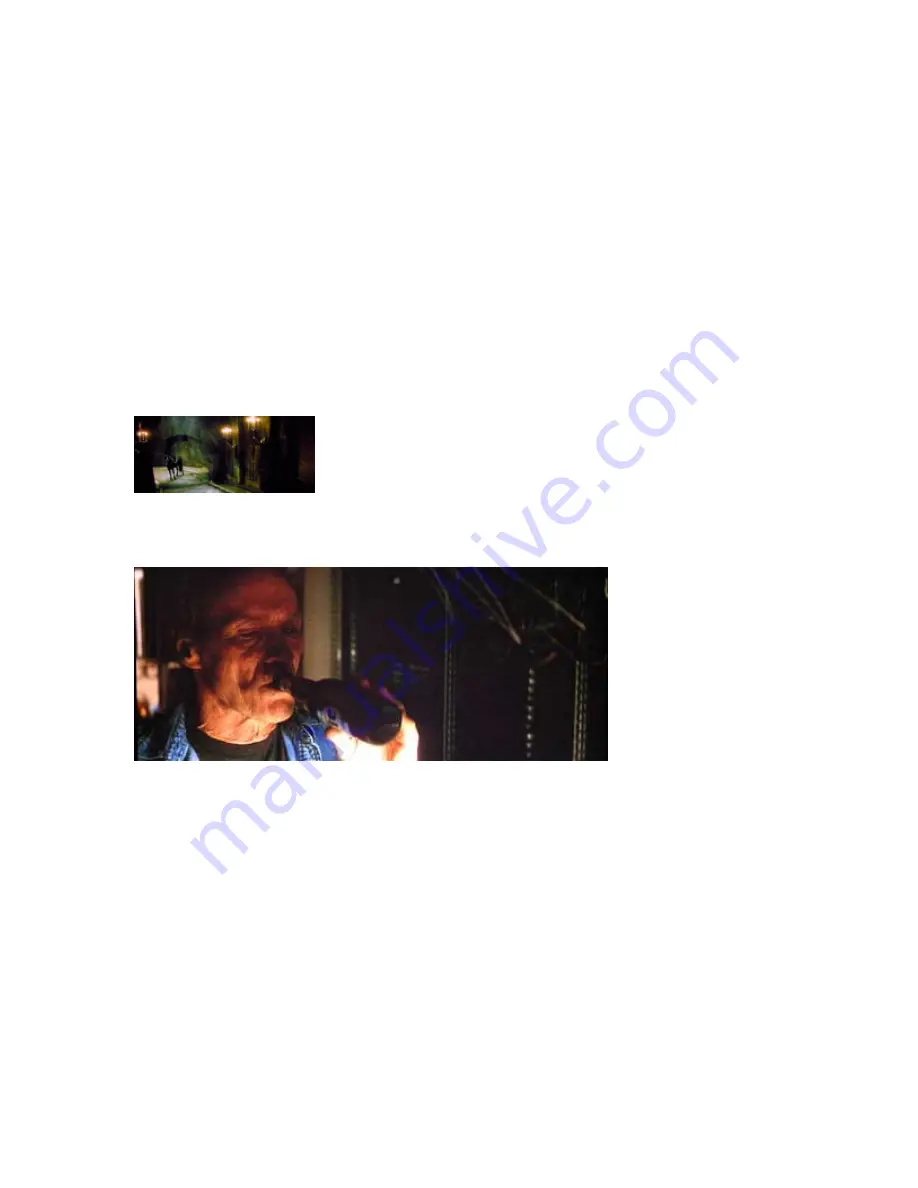
Because the PT-AX200U relies on a dynamic irs, as do almost all LCD home theater projectors,
they can do a really great job of producing the "blackest blacks" on very dark scenes. Where
the DLP projectors have the advantage, is on mixed scenes, where there are some very bright
areas as well as very dark ones. The bright areas prevent the projector from closing down the
iris to lower black levels. In all fairness, if a scene has a fair amount of those bright areas,
first, the eye is drawn to, and adjusts to the bright area, and second, because of that, you are
less likely to notice the slightly lighter blacks.
Time to concentrate more on the shadow area details, than the black levels of the PT-AX200U.
From Phantom of the Opera, this cavern scene is a good test of shadow details. You can also
find these images on almost all reviews done in the last year, for comparison purposes. Click
on the thumbnail image for a large version that is seriously (intentionally) overexposed to
reveal the details that the camera loses at normal exposure. This will allow you to look at all
the details in the dark areas in the walls, and ground. The frescos on the walls are easily
visible, the structure of the various ducts in the walls, which are very dark, are
distinguishable, which is more than a number of other projectors can claim.
Another good image is this extremely dark scene from Space Cowboys. In a room illuminated
by only a single table lamp, this truly is a dark scene.
This overexposed (above) image of Clint Eastwood in Space Cowboys, reveals a respectable
amount of shadow information in the wall on the right half of the image, but the blacks don't
get black enough to bring out all the information. In this case, although the blacks were never
inky black, the detail is excellent, rivaling far more expensive projectors. In fact, you can
make out on the back wall, that you are looking at mini-blinds, and there is plenty of other
detail visible.
Most impressive!
Next is an image frequently used, from Lord of the Rings. This image below is badly
overexposed so you can see the details that the projector captures in the shed on the right,
along the ground and the structure on the left. This image is available in most reviews done in
the last couple of years. Click on the thumbnail, for an overexposed image. You can clearly
see details in the shed on the right, on the posts of the open structure on the left, and along
the bottom of the image.


























